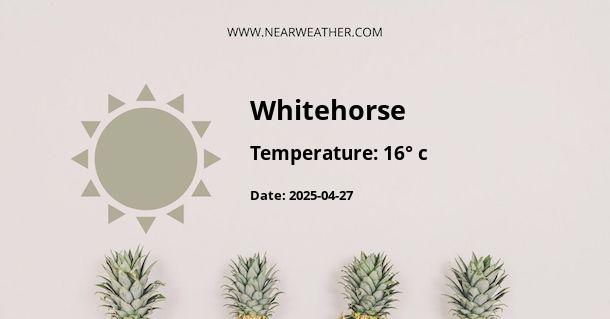Whitehorse, Australia: Climate and Weather Overview
Welcome to our comprehensive guide to the climate and weather of Whitehorse, Australia. Whitehorse is a vibrant city located in the eastern suburbs of Melbourne, the capital of Victoria. The city experiences a temperate climate with distinct seasons throughout the year. Let's explore the weather patterns, temperatures, and precipitation that residents and visitors can expect in Whitehorse.
Seasonal Weather Patterns
Whitehorse, like much of Australia, experiences four distinct seasons: summer, autumn, winter, and spring. Each season brings its own weather patterns and temperature ranges, providing a diverse climate experience throughout the year.
| Season | Weather | Temperature Range |
|---|---|---|
| Summer (December - February) | Warm and relatively dry with occasional hot spells | Average High: 25-30°C Average Low: 12-15°C |
| Autumn (March - May) | Mild and pleasant with colorful foliage | Average High: 17-21°C Average Low: 7-10°C |
| Winter (June - August) | Cool with occasional rain and frosty mornings | Average High: 12-15°C Average Low: 3-6°C |
| Spring (September - November) | Mild with blooming flowers and increasing sunshine | Average High: 18-22°C Average Low: 8-12°C |
Precipitation
Whitehorse receives a moderate amount of rainfall throughout the year, with the highest precipitation occurring during the winter months. The city experiences occasional thunderstorms and showers, particularly in the late spring and early summer.
The average annual precipitation in Whitehorse is approximately 750-850 millimeters. This distribution of rainfall contributes to the lush greenery and vibrant flora that can be observed across the city and its surrounding areas.
Extreme Weather Events
While Whitehorse generally experiences mild and temperate weather, the city is not immune to extreme weather events. Heatwaves can occur during the summer months, with temperatures occasionally soaring above 35°C. Additionally, cold snaps during winter can lead to frost and occasional snowfall in the region, creating picturesque winter landscapes.
Climate Data
For those who are particularly interested in the climate data of Whitehorse, the following table provides a summary of the city's average temperature and precipitation levels across the year:
| Month | Average Temperature (°C) | Precipitation (mm) |
|---|---|---|
| January | 25 | 50 |
| February | 26 | 45 |
| March | 23 | 55 |
| April | 20 | 70 |
| May | 16 | 80 |
| June | 13 | 90 |
| July | 12 | 100 |
| August | 13 | 100 |
| September | 15 | 90 |
| October | 18 | 80 |
| November | 21 | 65 |
| December | 24 | 55 |
These average values provide a clear picture of the seasonal variations in temperature and precipitation in Whitehorse, allowing residents and visitors to plan and prepare for the different weather conditions throughout the year.
Conclusion
Whitehorse, Australia, offers a diverse and enjoyable climate with distinct seasonal changes. From warm summers to colorful autumns and occasional winter frost, the city's climate provides a rich tapestry of weather experiences for all to enjoy. Understanding the weather patterns and climate data can enhance one's experience and preparedness when visiting or residing in Whitehorse.
With its moderate rainfall and pleasant temperatures, Whitehorse's climate sets the stage for an array of outdoor activities and scenic beauty, making it an appealing destination for nature enthusiasts and those seeking a balanced climate year-round.
A - Whitehorse's Latitude is -37.828678 & Longitude is 145.154327.
A - Weather in Whitehorse is 21° today.
A - Climate Conditions in Whitehorse shows broken clouds today.
A - Humidity in Whitehorse is 52% today.
A - Wind speed in Whitehorse is 7.49 km/h, flowing at 76° wind direction. today.
